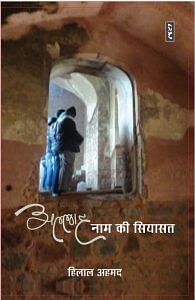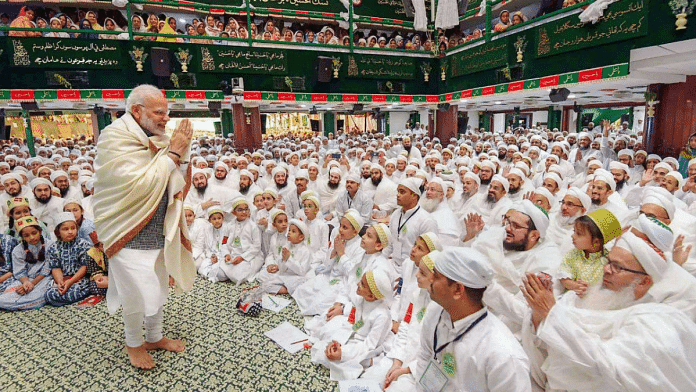The concept of Indian Islam reveals two contradictory tendencies. The first is to see Islam keeping India at the center, and the second is to find the meaning of India in the background of Islam. It is these two conflicting trends that have established Indian Islam as an academic and political discourse. The first tendency is to fit the universality of Islam into a specific context and give it a cultural basis. This reveals a distinctly Indian face of Islam which together with other geo-cultural faces of Islam presents a colorful picture of Global Islam. On the contrary, under the second trend, it seems as if the universality of Islam is rising above the categories like context and time, creating an area in which the element named ‘India’ has completely merged. This trend shows that Islam is actually such a totality in which differences like culture, caste and class are completely absorbed without context.
Indian Islam as a term emerged in the era of colonialism. The simple reason for this was that for the British colonial discourse, ‘Islam’ and ‘India’ were diametrically opposite things. The British and, more broadly, the European colonial powers were directly acquainted with Islam. Islam had been a political challenge to him, and in his own nascent modern discourse, Islam and Christianity were organized political categories. In sharp contrast, India was such a strange political entity where neither the medieval European model of religion and politics nor the model of the Caliphate-ruled Ottoman Empire could apply. Here religion and politics were mixed and governed by social structures, especially caste structures. In such a situation, there was a special difference between the followers of Islam and the Muslim rulers. This was as great a difference as that between non-Muslim castes and Muslim rulers. In the words of Sudipta Kaviraj, the concept of ‘India’ was created by the colonial discourse in such a way that the principles of community formation changed completely. Kaviraj points out that in the pre-colonial context, the structure of communities and the image of the community itself were ambiguous in two ways. First, there were no straight conceptual lines between the complex identities of caste, village and religion. In such a situation, the identity of a person was such a set of all these identities that could not be seen by breaking. Secondly, the communities had not been enumerated till then. In such a situation, how many members of which community, or which community is majority or minority, was not decided. As a result, the relations between the communities were practical and the scope of mutual understanding and disputes was also very limited. But British colonialism divided these structures into new categories. Enumeration of communities on the basis of religion and caste gave them fixed and closed identities and thus the category called Indian Muslim was born. Along with this, it was also found that Indian Muslims are actually a minority of this country. The coming of Muslims to India, the systems of governance established by them, their religion, customs and their relationship with Islamic discourse outside India became a political question. The academic discussion of Indian Islam has also been associated with these questions. Interestingly, the literature produced by this continuous effort is not only very interesting, but also gives a new direction to the discussion of Global Islam.
If we look at colonial India, then some important works of Amir Ali are seen, whose basic purpose is to introduce the British government and the British elite to the basic principles of Islam. Notable among these books are A Short History of Karsans of 1847 and The Life of Muhammad of 1890. These books place Indian Islam in the wider history of Islam. This is the reason why references to Muslim rule in India are rarely found in these works.
This trend is also found later in the writings of Muhammad Iqbal. Although India occupies an important place in Iqbal’s poetry, his philosophical work Reconstruction of Religious Thought in Islam, published in 1930, establishes the logic of a religious culture in the light of which all Muslims are seen to be transformed into a single entity.
Maulana Abul Kalam Azad and, broadly speaking, Jamiat Ulema-e-Hind have given another direction to this trend. Azad’s writing also shows an attempt to establish an ideological balance between the universality of Islam and nationalism. But nationalism is by no means based on Islamic influences present in the Indian social structures. Rather, it has been told in such writings that in fact there is a place for nationalism in the generality of Islam, or rather, for Indian nationalism. There can be a reconciliation between Muslims and India which Azad’s ideology gives the name of ‘Darul-Sulh’.
Purely academic discourse on Indian Islam dates back to the forties and fifties. W.C. Smith’s works attempt to look at Islamic pluralities and Muslim politics in a new light. Smith’s book Islam in Modern History, published in 1957, provides a detailed analysis of the diversity and characteristics of Indian Islam. An accurate picture of this plurality is found in the writings of Aziz Ahmed. Aziz Ahmed’s two books, Studies in Islamic Culture in Environment (1964) and Islamic Modernism in India and Pakistan (1967) provide historical analysis of South Asian Indian Islam.
The sociological study of Islamic pluralism began in the late 1960s. Imtiaz Ahmed, Triloki Nath Madan and Paul Brass gave a new direction to the debate on Indian Islam. Imtiyaz Ahmed edited a four-volume tome that presented an on-the-ground analysis of the various forms of Muslims and Islam, and of Muslim customs and social practices. Brass’s work proved how the discourse of Urdu became an icon of Muslim politics. Madan offered a sociological explanation of the complexities of Kashmiri Islam. All these analyzes constitute a perspective which can be called the thesis of assimilation.
In the seventies, a new academic approach started against this thesis. Francis Robinson, while reviewing modern Muslim history, said that the trend towards Islam in Muslim communities determines their political identity. In such a situation, the plurality contained in the thesis of assimilation does not explain Muslim separatism correctly. This tradition of Robinson was carried forward by Farzana Shaikh. Shaikh’s book Community and Cooperation in Islam: Muslim Representation in Colonial India (1989) sets out the whole debate of Muslim representation as Islam as a political community. The perspective from which the critical historical analyzes of Robinson and Sheikh presented Indian Islam can be called the primordial perspective or the fundamental thesis.
Between these two perspectives of Indian Islam, a new middle way discussion is being born. In this the names of historians Richard Eaton, Shail Mayaram and Yoginder Sikand are notable. While analyzing medieval Islam, Eaton said that in fact the identity of Indian Islam is determined by mutually opposite processes. One process Islamises local cultural communities by connecting Muslim communities to centers of Islam, while the other process localises Islamic principles by refining them from the point of view of local cultures. In this way, Muslims are Islamic even though they are ‘local’, while Islam is widespread, it shows the complexity of the discussion of Indian Islam by studying Muslim women, Muslim Dalits and such castes, which cannot be divided into categories like Islam and Hinduism.
The Dalit-Muslim/Pasmanda Muslim perspective should also be kept in the same category for the last decade and a half, which has made the specific caste structures of Indian Islam the basis of political discourse. In short, Indian Islam is the name of such a dynamic discussion whose speed is like a pendulum. At one end of this pendulum are the principles of Islam, the centers of Islam and the uniformity of Islam, while at the other end are Muslim cultures, diversities and localities.
 This excerpt from Hilal Ahmed’s ‘Allah Naam ki Siyasat’ has been translated from Hindi. It has been published with permission from Setu Publications.
This excerpt from Hilal Ahmed’s ‘Allah Naam ki Siyasat’ has been translated from Hindi. It has been published with permission from Setu Publications.



